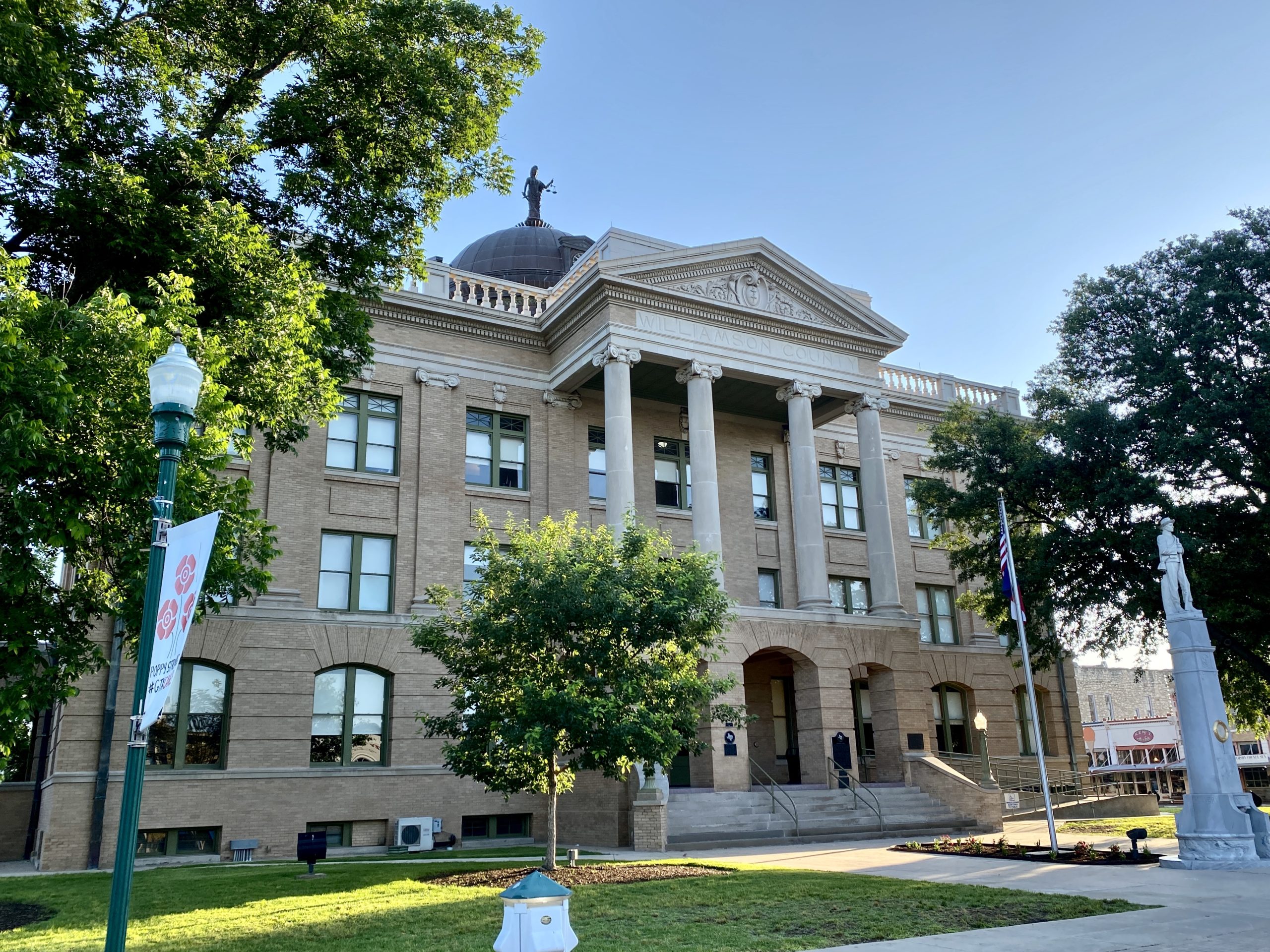Williamson County Courthouse (Georgetown)

Architect: Charles H. Page & Bro. (Louis Page).
Year Built: 1910.
The Williamson County Courthouse is located in Georgetown, Texas. It is the Fifth courthouse to serve the county. It is designed in the Classical Revival architectural style and features ionic columns, a copper dome with four faced clock and a beautiful patina bronze statue of Lady Justice. The grounds also boast a 1916 Confederate Soldiers Civil War Monument (although the County rejected secession) and several historical markers, including one commemorating the momentous Ku Klux Klan trials of the 1920’s.
About Williamson County
Williamson County was created in March 1848, and named for Robert McAlpin Williamson (nicknamed “Three-Legged Willie” because of his pegleg). The area was previously part of Milam County.
Excerpt from TSHA Handbook: The Williamson County area has been the site of human habitation since at least 4500 B.C. The earliest known historical occupants of the county, the Tonkawas, were a flint-working, hunting people who followed the buffalo on foot and periodically set fire to the prairie to aid them in their hunts. During the eighteenth century they made the transition to a horse culture and used firearms to a limited extent. Decimated by European diseases and by warfare with Cherokees and Comanches, the Tonkawas were generally friendly towards the early Eurpoean settlers of Williamson County.
While Álvar Núñez Cabeza de Vaca may have traveled through the area in the sixteenth century, it was probably first explored by Europeans in the late seventeenth century, when Capt. Alonso De León sought a route between San Antonio and the Spanish missions in East Texas that would serve as a drier alternative to the more southerly Camino Real. The new route passed through the area of Williamson County along Brushy Creek and the San Gabriel River and was called Camino de Arriba. During the Mexican period parts of the county were awarded as land grants, first to several Mexican families, then as part of Robertson’s colony, but no settlement resulted from these grants.
Anglo settlement began during the Texas Revolution and the early days of the Republic of Texas. In 1835, in an attempt to strengthen the frontier against Indian attack, a military post was built near the headwaters of Brushy Creek in what would become southwestern Williamson County and was named for Capt. John J. Tumlinson, Jr., the commander of the company of Texas Rangers who garrisoned the post. The post was abandoned in February of 1836, when its garrison was withdrawn to deal with the Mexican invasion. In 1838 the first civilian settlement was established by a Dr. Thomas Kenney and a party of settlers who built a fort, named Kenney’s Fort, on Brushy Creek near the site of the present-day crossing of the Missouri-Kansas-Texas Railroad.
About the Architect
Excerpt from the Austin History Center): Charles Henry (“C.H.”) and Louis Page were sons of an English immigrant mason and contractor. Born in St. Louis, the family then moved to Austin in 1886. Both sons attended public schools and worked with their father in the construction industry.
Charles Henry began practice at the age of 19 in the firm Makin and Page. He left that firm and began an independent practice as C. H. Page, Jr. but was soon joined by his brother Louis. Page Brothers, Architects (also known as C. H. Page Jr. & Bro.) was formed in 1898 and became one of the leading firms specializing in public projects such as public schools and courthouses.
Page Brothers, Architects were responsible for the designs of the Littlefield Building, Travis County Courthouse and Austin National Bank (1930, razed 1956) buildings in Austin. They also designed the courthouses in Hays, Anderson, Fort Bend, Orange, Hunt, and Smith counties. In 1903 Charles Henry Page’s design for the Texas State Building was chosen to represent Texas at the 1904 St. Louis World’s Fair.














